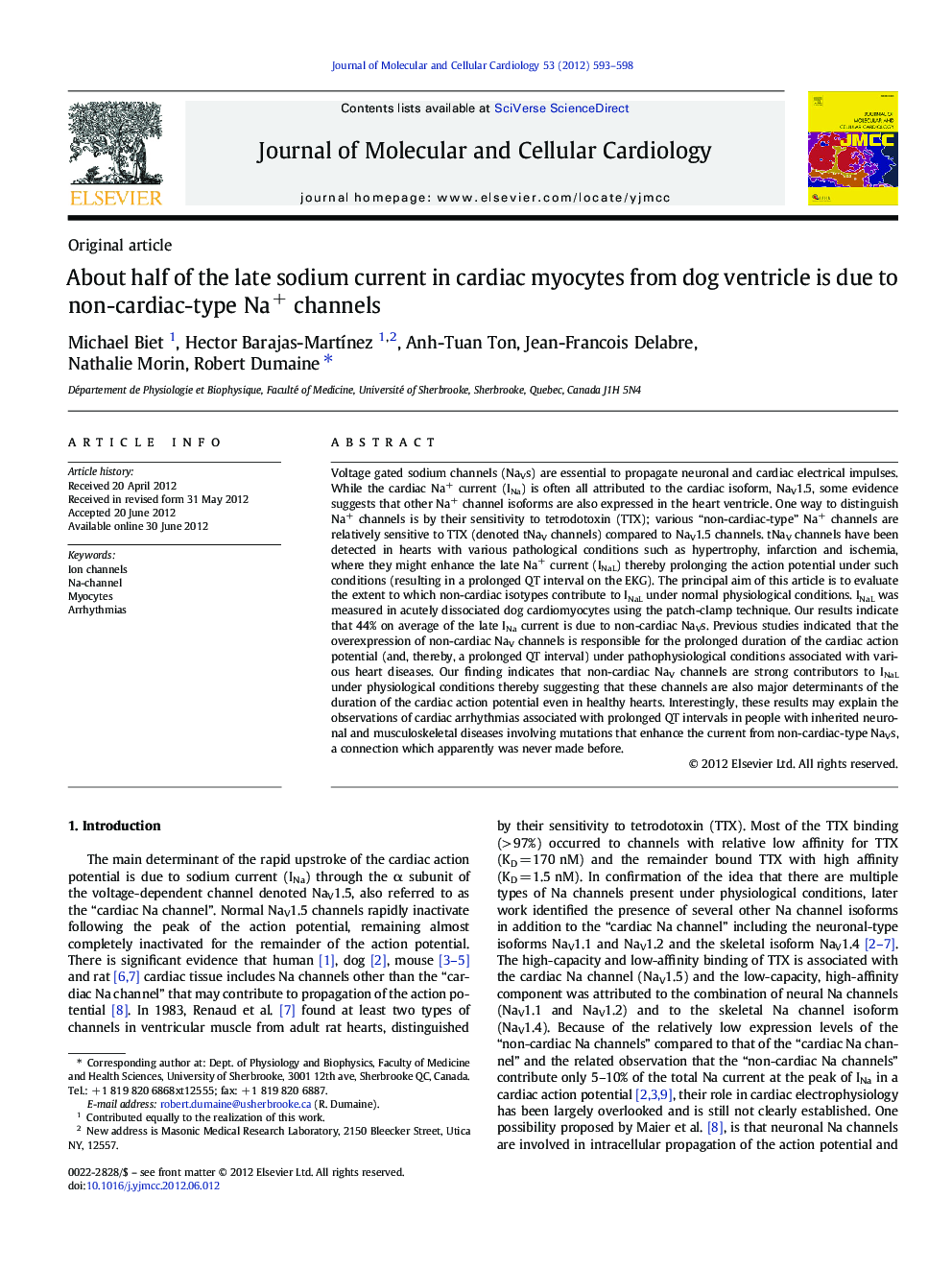| Article ID | Journal | Published Year | Pages | File Type |
|---|---|---|---|---|
| 2190712 | Journal of Molecular and Cellular Cardiology | 2012 | 6 Pages |
Voltage gated sodium channels (NaVs) are essential to propagate neuronal and cardiac electrical impulses. While the cardiac Na+ current (INa) is often all attributed to the cardiac isoform, NaV1.5, some evidence suggests that other Na+ channel isoforms are also expressed in the heart ventricle. One way to distinguish Na+ channels is by their sensitivity to tetrodotoxin (TTX); various “non-cardiac-type” Na+ channels are relatively sensitive to TTX (denoted tNaV channels) compared to NaV1.5 channels. tNaV channels have been detected in hearts with various pathological conditions such as hypertrophy, infarction and ischemia, where they might enhance the late Na+ current (INaL) thereby prolonging the action potential under such conditions (resulting in a prolonged QT interval on the EKG). The principal aim of this article is to evaluate the extent to which non-cardiac isotypes contribute to INaL under normal physiological conditions. INaL was measured in acutely dissociated dog cardiomyocytes using the patch-clamp technique. Our results indicate that 44% on average of the late INa current is due to non-cardiac NaVs. Previous studies indicated that the overexpression of non-cardiac NaV channels is responsible for the prolonged duration of the cardiac action potential (and, thereby, a prolonged QT interval) under pathophysiological conditions associated with various heart diseases. Our finding indicates that non-cardiac NaV channels are strong contributors to INaL under physiological conditions thereby suggesting that these channels are also major determinants of the duration of the cardiac action potential even in healthy hearts. Interestingly, these results may explain the observations of cardiac arrhythmias associated with prolonged QT intervals in people with inherited neuronal and musculoskeletal diseases involving mutations that enhance the current from non-cardiac-type NaVs, a connection which apparently was never made before.
► We tested for the contribution of neuronal type sodium channels to INaL. ► We found that nNaVs contribute 44% to late (sustained) sodium current. ► Neuronal NaVs may modulate cardiac action potential and QT duration. ► This links neuronal disorders to cardiac arrhythmias and intrinsic heart defects.
